Greek Mountain Tea, South (Sideritis syriaca), packet of 20 seeds, Organic
$4.95
Family: Mint (Lamiaceae)
Hardy to Zones 7 to 10
(South Greek Mountain Tea, Ironwort, Malotiras) Woody perennial growing to 18 inches, native to Kriti, Lebanon-Syria and Turkey. A comely plant, highly desired for those of us blessed with hot, dry summers and cool, moist winters. Tea of dried flowering tops is savory, earthy, sweetish and pleasant. Traditional usage (TWM): antiinflammatory, antioxidant, immunotonic, digestive, respiratory tonic, anxiolytic. Plant prefers full sun and very fast draining soil of raised bed or rockery, needing water to establish but drought tolerant once established. Plant prefers full sun. In the spring or anytime in warm soils, scarify seed on medium grit sandpaper, then sow in pots or flats. Barely cover, tamp well and keep warm, evenly moist and in the light until germination, which occurs in about 10 days. Individuate seedlings to gallon pots and grow until sufficiently sized to transplant successfully to garden or landscape. Space plants 18 inches apart.
20 seeds per packet, Certified Organically Grown
In stock

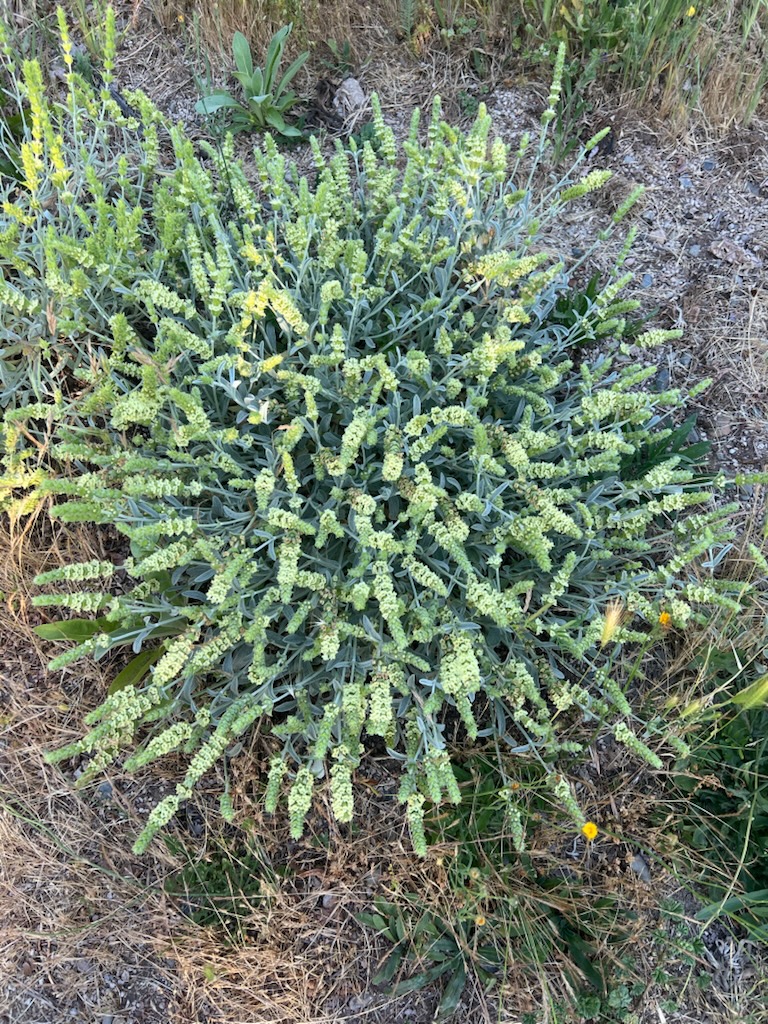
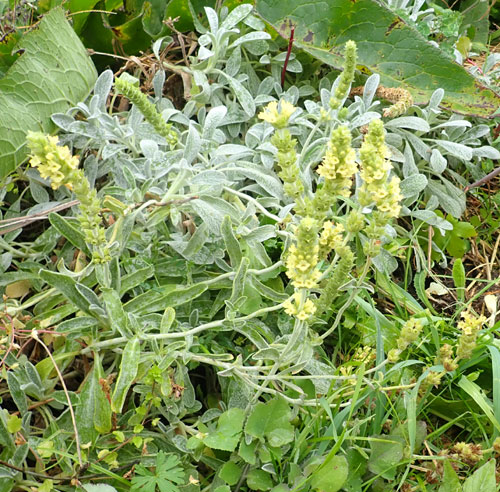
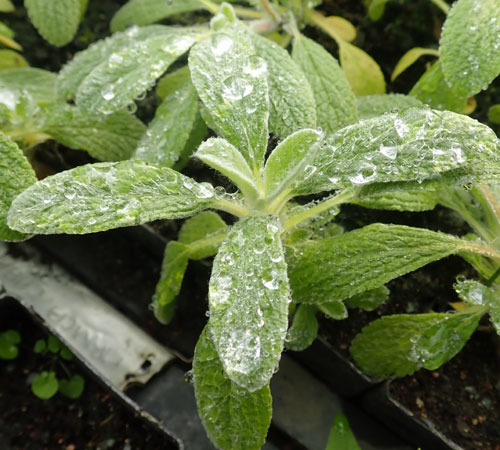
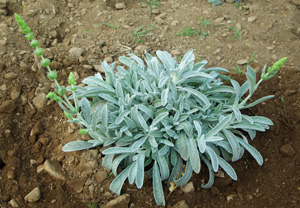
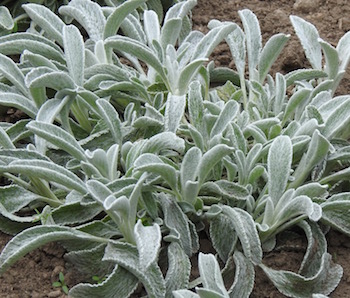
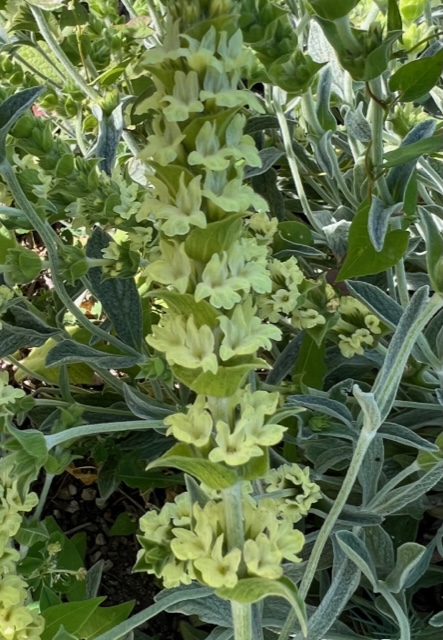
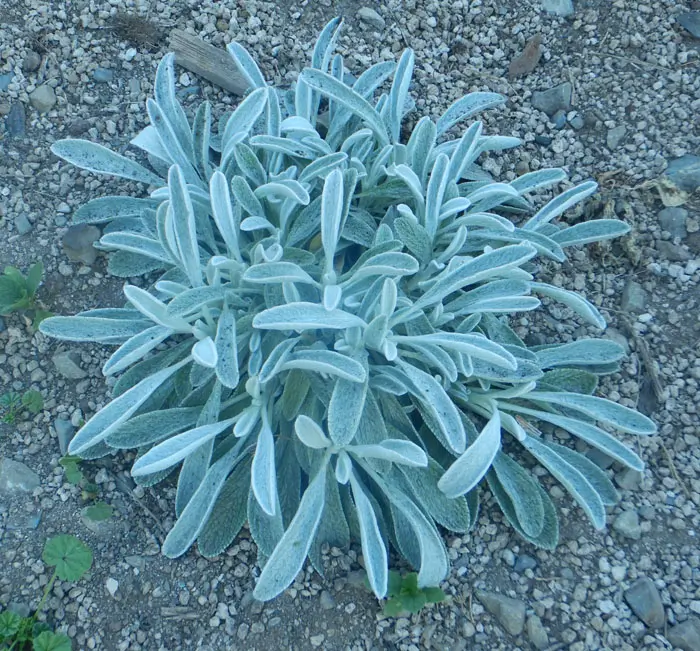
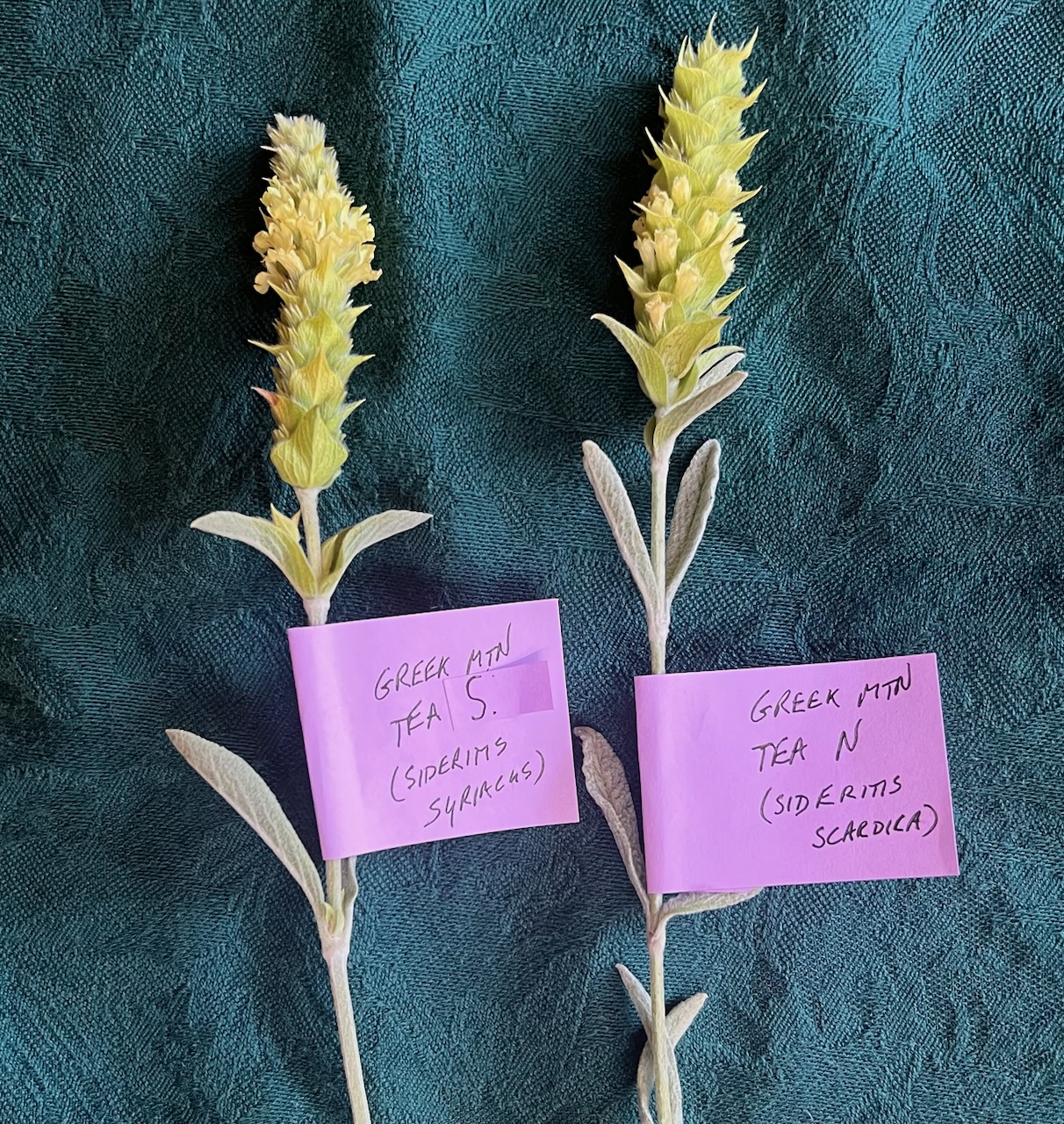

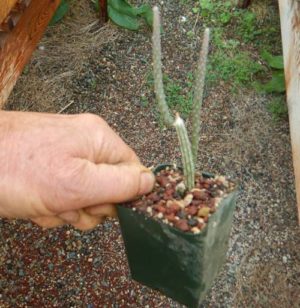

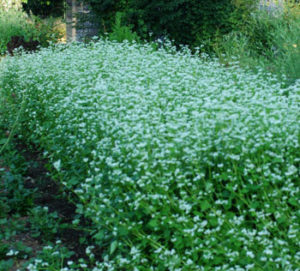
Tristan –
I believe this is the syriaca variety that I planted in early April of middle Tennessee just last year in 2023 about 10 minutes from the Kentucky border which i would consider zone 6. It was watered some at first and it has been left alone since. It’s in a raised bed against a southern facing concrete and then metal wall. So, don’t be afraid to experiment if you believe something may be just out of your zone. This pic is of a few days ago. I usually have success when following richos instructions and my only real problem with indoor plant starts is gnats. I believe this is my favorite tea and I’m excited to start harvesting my own! I forgot about planting this there since that’s not where I live so it was a pleasant surprise to be notified 😉 (if it’s scardica please correct me)
Upvote if this was helpful (1) Downvote if this was not helpful (0) Watch Unwatch Flag for removal
Julia –
It’s a joy to grow this in my garden! My family is from Crete, where this is a beloved wild tea herb (“malotira” or “tsai tou vounou” — tea of the mountains) and I’d always bring home bundles in my suitcase when visiting. I grew several plants from your seeds a few years ago, and they are thriving in my Northern California garden! Beautiful and ornamental as well as deeply grounding and nourishing — the scent calls me back. Thank you for making these seeds available!
Upvote if this was helpful (0) Downvote if this was not helpful (0) Watch Unwatch Flag for removal
Richo Cech –
hi julia, how very cool of you to share all this. This inspires me. richo
Upvote if this was helpful (0) Downvote if this was not helpful (0) Flag for removal
Jess V (verified owner) –
I looked all over for Greek Mountain Tea seeds and couldn’t believe the variety Strictly Medicinal had. Ordered these two years ago, started them indoors, had a high germination rate, and they transplanted to the outdoors beautifully. I only lost one or two of the smaller plants. Two years on, they spread by themselves, flower regularly, and the tea is exactly what I hoped for. Thank you!
Upvote if this was helpful (0) Downvote if this was not helpful (0) Watch Unwatch Flag for removal
kirstie.stramler (verified owner) –
I was given this tea to treat a tummy ache some 20 years ago while visiting Greece. I am so happy to be growing it now! I had a busy late winter so allowed them become shockingly root bound in 2 gallon containers, but it is a forgiving plant, and after pruning and a month in a 15 gallon container, each plant is nearly 2 feet across and has several dozen spikes with blooms about to open.
I am wondering, do any of you folks how to know how to identify when to harvest seeds from my gorgeous happy mountain tea plants?
Upvote if this was helpful (2) Downvote if this was not helpful (0) Watch Unwatch Flag for removal
Richo Cech –
Hi Kirstie, Thanks for contacting. We’re really into these, too. They will flower yellow and then the flowers dry up and after some time the entire head will dry. At that point you can cut it off and rub it on a screen and the seeds will come out. You can check our seed cleaning screens on this website–they are very useful in this context! Richo
Upvote if this was helpful (3) Downvote if this was not helpful (0) Flag for removal
Kristen Davenport –
I found these hard to germinate, but I also found them to be much hardier than a z. 7 … these plants overwintered in my Rocky Mountain garden (in theory a z. 4b, but let’s be realistic, we haven’t had more than a 5b winter in years thanks to climate change) for several winters. They died out due to drought, but they also don’t care to have wet feet for too long in the winter, sorta like lavender.
Upvote if this was helpful (2) Downvote if this was not helpful (0) Watch Unwatch Flag for removal
Question
Joss –
Greetings Richo,
May I start Sideritis syriaca indoors? I live in Zone 4b with about 105 days in the growing season. I am curious about how many days to maturity for it to flower and produce seed? Would that be possible? I directly sowed last season in sun and it did not grow past a few inches, maybe not enough sun.
Greatly appreciate your work!
Upvote if this was helpful (1) Downvote if this was not helpful (0) Watch Unwatch Flag for removal
Richo Cech –
Hi there, thanks for the nice communication. the greek mountain tea doesn’t flower or make seed until the second year. if your zone is too cold, then do bring in for the winter. My plants usually size up the first year to about 18 inches across and then make flowers and seeds by midsummer of the next year. if you can catch that cycle, then 105 days is enough. r
Upvote if this was helpful (2) Downvote if this was not helpful (0) Flag for removal
Ginger-Sue Hilliard –
What is the difference between North and South as far as health benefits go?
Upvote if this was helpful (3) Downvote if this was not helpful (0) Flag for removal
Richo Cech –
Hello Ginger-Sue,
Herbalists use these interchangeably, mainly as a source of bioavailable iron and as an antitussive, also simply as a tasty morning tea. Some people are really attached to one or the other, though, so we’re glad to have both species available. I’m growing both of them, in isolation, to better compare them.
Richo
Upvote if this was helpful (3) Downvote if this was not helpful (0) Flag for removal
Question
AW (verified owner) –
Does it flower?
Upvote if this was helpful (0) Downvote if this was not helpful (0) Watch Unwatch Flag for removal
Richo Cech –
When you go to the monograph (which is where you left this question) there is a little line of thumbnails nest to the main photo. hover over them and you will see the extra pictures in full size. one of these shows the yellow flowers–they are showy. richo
Upvote if this was helpful (1) Downvote if this was not helpful (0) Flag for removal
Kristen –
I’ve had plants of Greek Mountain tea in my garden for 4 winters now and we’re technically a z. 5 although the last few winters have been mild. I’m at 8K in the rocky mountains. It doesn’t grow like gangbusters or anything but it does OK! I was concerned it may be one of those plants that doesn’t like to be wet all winter (we do get solid snowcover) but it seems to be tolerating it.
Upvote if this was helpful (1) Downvote if this was not helpful (0) Watch Unwatch Flag for removal
Richo Cech –
Hi Kristen,
I was thinking about greek mountain tea this morning because we’re tryi9ng to figure out which plants can go into the field at this time of year, when some frost may still occur. Actually, any pubescent plant like this (Stachys byzantina would be another good example) is usually quite frost hardy, due to the protection afforded the leaves. Its always nice to hear when people are able to cultivate plants outside the recommended zones. I think everyone should keep this potential in mind. The zones given are just a general recommendation–the true acid test is to plant it and see what happens. Richo
Upvote if this was helpful (2) Downvote if this was not helpful (0) Flag for removal
julie –
Purchased plants, sited in the unheated greenhouse, zone 5, have been mostly fine. We had a cold winter a few years ago, down to -15, which killed all the Hill’s Hardy rosemary planted next to it, this died back some, but survived. It is starting to reseed.
The scent of this is one of my favorites on earth, and it makes a wonderful mild tea.
Upvote if this was helpful (4) Downvote if this was not helpful (0) Watch Unwatch Flag for removal
Adelina –
Hi I leave in Georgia zone 8b. Will I be able to grow Sideratis Scardica in my zone with the right soil for the plan?
Upvote if this was helpful (0) Downvote if this was not helpful (0) Flag for removal
Richo Cech –
Hello Adelina, Thank you for writing and for wanting to grow this incredibly nice tea plant. If you click on the photo you’ll get the monograph where these are listed all the way up to a zone 10. You’re fine! Richo
Upvote if this was helpful (0) Downvote if this was not helpful (0) Flag for removal
Allegra –
This plant has so many advantages I hardly know where to begin:
Soft, velvety, bluish-white foliage with odd curving flower spikes of soft yellow that attract all manner of small pollinators — a beautiful perennial white-foliage plant
Exceptional drought tolerance
Flowers make a pleasant, relaxing tea
Spreads beautifully over the ground and seems easy to please as to soil (I have it in a fast-draining, coarse soil w/ a pH of 7.5); cascades over the side of raised beds
Blooms all year in zone 9, and very heavily in late spring and summer.
It forms low, dense clumps with a nice understory where I have found hordes of spiders hunting other denizens of the dark. For those with a naturalist bent it’s a fascinating laboratory but in any case providing a sheltered spot for spiders in the garden is always a good idea.
I have found literally no downside to this plant. Other than dead-heading the flower spikes occasionally I give it as little care as any plant I’ve ever grown. I water it once a month or so from June to September and don’t fertilize it at all now that the plants are fully established. It gives a lot and asks for very little in return.
Upvote if this was helpful (6) Downvote if this was not helpful (0) Watch Unwatch Flag for removal
Catherine –
No one here describes the flavor or scent. I know some herbs are unique in flavor/scent, but many can be compared to something familiar to all. To say they smell sweet does not help a whole lot. Is it like oregano, thyme, scented like alyssum, rather honey-like? Fruity like cherries or licorice-like similar to tarragon? Someone please give your best description of similar comparison taste and fragrance-wise. Thanks!
Upvote if this was helpful (0) Downvote if this was not helpful (0) Flag for removal
Richo Cech –
hi catherine, The tea has a gentle astringency and is not unlike common black tea. richo
Upvote if this was helpful (0) Downvote if this was not helpful (0) Flag for removal